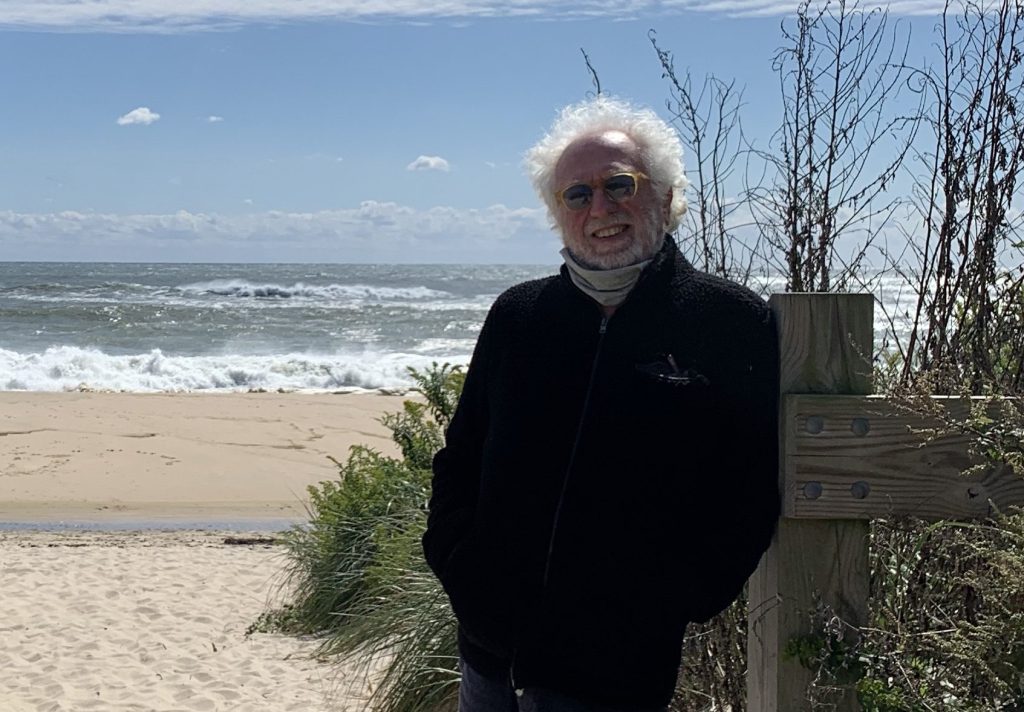Our Amazing History: Carl Fisher

At the very center of downtown Montauk is the Carl Fisher Plaza. Who was he? He was the man who tried to develop the entire peninsula of Montauk as an English-style summer resort for the social set during the 1920s. He finished the resort. But in the end, he failed. Nevertheless, we honor him.
Carl Fisher was born and raised in Indianapolis with a flair for business and adventure. As a teenager he dropped a sturdy bicycle off the top of that city’s tallest building to show how strong the bikes in his bike shop were. In his 20s, he got involved with auto racing and held the world’s auto speed record for two miles for a time. Then, seeing an opportunity, he bought the patent for sealed auto headlights and made a fortune. His next project was to co-found the Indianapolis Speedway. After that, he led a successful campaign to get the government to build the Lincoln Highway connecting New York and California. Then he retired in Miami. But an uninhabited island off Florida’s east coast intrigued him so he bought it and built Miami Beach.
One day, an employee of his suggested he build a summer resort at Montauk. This was in 1925. The marketing slogan was “Miami Beach in the Winter, Montauk in the Summer.” So, he came north aboard his grand yacht, and after being chauffeured along the hills and dales of that virtually uninhabited peninsula, he purchased nearly 10,000 acres of it.
Perhaps the most astonishing thing he did after returning to Miami Beach was to create a set of plans for new roads and resort buildings in Montauk from one end to the other, and then hire more than 800 laborers to come and build all of it at the same time.
As he said, he loved to watch the dirt fly.
He visited the construction of Montauk from time to time. Between 1925 and 1927, he built all the roads and the grid of streets downtown and everywhere else. (They are there today.) He dynamited an inlet to make Lake Montauk a harbor, and constructed a yacht club, a golf course, outdoor and indoor tennis courts, a European-style Grand Prix race track, a polo field, and along the ocean beach downtown a wooden boardwalk with cabanas, lockers, a cafe and an inground, Olympic-size swimming pool.
And there were many other buildings. Nearly all were in that half-timbered Old English style. He built the 200-room Montauk Manor hotel high on a hill; a ranch for the cattle, sheep and horses he would import; several half-timbered inns (one of which would be in a tiny Irish-style village of little homes he built called Shepherd’s Neck where, temporarily, the laborers would live); both a Protestant and Catholic church; several rows of stores downtown in the half-timbered style; a glass-enclosed tennis court building; nearly a dozen half-timbered Tudor-style mansions offered for sale to friends; and, on the plaza facing the ocean, a tall, six-story office building, which would be the first of dozens of other tall office buildings on the plaza to thus define the completed resort of Montauk Beach, New York. He envisioned a small resort city with thousands of people. High up on the balcony of the penthouse apartment atop his six-story office building, he’d show other developers the commercial plots on the plaza available for sale.
All this opened for business for the summer of 1928. Just prior to this, a huge hurricane wiped out more than a quarter of his city of Miami Beach. Fisher had to reallocate resources to Miami Beach, and thus held a “soft” opening at Montauk that summer. But then the Stock Market Crash of 1929 wiped him out entirely. In 1939, Fisher died, some say of drink, in Miami Beach at the age of 65.
So that’s the man this plaza has been named for.









